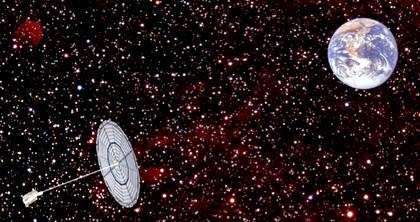A new space telescope concept, named the Aragoscope after French scientist Francois Arago who first detected diffracted light waves around a disk, could allow scientists to image space objects like black hole “event horizons” and plasma swaps between stars, said Cash of CU-Boulder’s Center for Astrophysics and Space Astronomy. The novel telescope system also could point toward Earth and image objects as small as a rabbit, giving it the ability to hunt for lost campers in the mountains, he said.
The Aragoscope could provide images up to 1,000 times sharper than the Hubble Space Telescope.
A conventional space telescope is pointed at an opaque disk along an axis to a distant target. The disk boosts the resolution of the system with no loss of collecting area. It can be used to achieve the diffraction limit based on the size of the low cost disk, rather than the high cost telescope mirror. One can envision affordable telescopes that could provide 7 centimeter resolution of the ground from geosynchronous orbit or images of the sky with one thousand times the resolution of the Hubble Space Telescope.
A new orbiting telescope concept developed at CU-Boulder could allow scientists to image objects in space
Read more »![]()
The Aragoscope could provide images up to 1,000 times sharper than the Hubble Space Telescope.
A conventional space telescope is pointed at an opaque disk along an axis to a distant target. The disk boosts the resolution of the system with no loss of collecting area. It can be used to achieve the diffraction limit based on the size of the low cost disk, rather than the high cost telescope mirror. One can envision affordable telescopes that could provide 7 centimeter resolution of the ground from geosynchronous orbit or images of the sky with one thousand times the resolution of the Hubble Space Telescope.
A new orbiting telescope concept developed at CU-Boulder could allow scientists to image objects in space
Read more »
